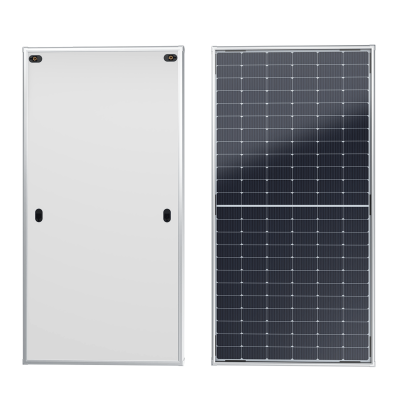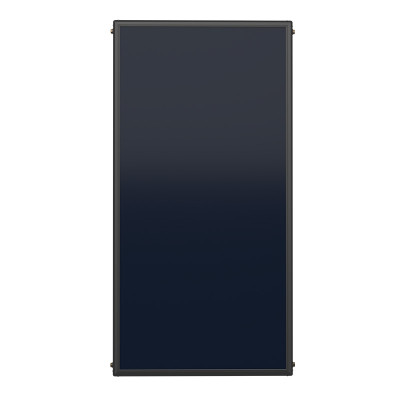Future of Hybrid Solar: Innovations Driving PVT Technology
Future of Hybrid Solar: Innovations Driving PVT Technology
PVT solar is no longer experimental — it's evolving fast. Here's where it's headed next.
As someone focused on commercial solar strategy, I’ve been watching the rise of Photovoltaic Thermal (PVT) systems closely. These hybrid panels generate both electricity and heat — making them uniquely positioned to power a more efficient and resilient future. But what’s coming next in this space is even more exciting.
From material science to system integration, the future of hybrid solar energy systems is being shaped right now — and smart investors and engineers are already taking notes.
With innovations like nanocoatings, smart cooling, and solar-thermal integration, PVT is transforming from a niche solution into a mainstream commercial energy asset — combining efficiency, flexibility, and sustainability.
Why PVT systems are gaining momentum globally
The basic appeal is simple: PVT panels capture both sunlight and heat, giving you more energy output per square meter. In commercial and industrial buildings, where roof space is limited and energy demand is high, that’s a game-changer.
Compared to standalone PV systems, PVT offers:
Higher total system efficiency (up to 70%)
Electricity and usable heat from the same footprint
Better PV performance thanks to active cooling
But traditional PVT systems faced limitations in cost, complexity, and scalability. That’s where the next-gen technologies come in.
1. Wave-shaped pipe designs for better heat transfer
Traditional PVT systems use flat or straight pipes for heat exchange. However, recent research (e.g. Nottingham University) shows that wavy or helical pipe structures:
Improve fluid turbulence
Increase surface area
Enhance thermal absorption efficiency
Wave pipe systems can increase heat output by up to 18% while maintaining lower fluid flow rates — reducing energy required for pumping.
2. Integration with smart thermal storage
Heat from PVT systems can now be stored using advanced thermal storage materials such as:
Phase Change Materials (PCMs) – for compact, high-density heat storage
Water tanks – for domestic/commercial hot water
Seasonal thermal storage – buried tanks or gravel-bed systems
This allows buildings to shift energy use and reduce peak loads — a critical factor for grid stability and cost control.
3. Combining PVT with heat pumps and BIPV
The future is all about energy system integration.
Modern PVT designs are now being connected with:
Air-source or ground-source heat pumps – using captured heat to drive HVAC systems
Building Integrated Photovoltaics (BIPV) – for façade, window, or rooftop designs
District heating systems – especially in Northern Europe and China
These hybrid solar energy systems make buildings more autonomous and optimize both space and efficiency.
4. AI + IoT in solar system optimization
We’re also seeing AI and IoT play a growing role in managing system performance. Smart controllers can now:
Adjust flow rates based on sunlight and load
Switch between electricity and heat storage priorities
Predict weather conditions and optimize real-time usage
For multi-building or campus setups, this means a dynamic energy network where PVT panels work together like a grid — not just isolated units.
Global trends: where is PVT heading?
Germany – Subsidizing large-scale commercial PVT + heat pump installations
Netherlands – Mandating solar thermal contribution in new construction (PVT qualifies)
China – Rapid PVT deployment in industrial parks and data centers
Middle East – PVT used for cooling and desalination in off-grid areas
As energy regulations push toward Net Zero targets, PVT is increasingly recognized as a core technology for compliance — especially in buildings that require both heat and power.
Key challenges that are being solved
✅ Cost: Prices are dropping due to scaled manufacturing and simpler assembly methods
✅ Durability: New polymer materials reduce corrosion and increase lifespan
✅ Standardization: Plug-and-play modules make system integration easier for contractors
✅ Awareness: Commercial case studies and pilot projects are helping drive adoption
What’s next for PVT?
The PVT space is entering a commercial maturity phase. What used to be seen as “experimental” is now backed by data, field-tested, and increasingly affordable.
Over the next 5–10 years, expect to see:
More turnkey commercial solutions for schools, hotels, hospitals
Deeper integration into smart building energy management systems
Increased use in data centers, agriculture, and hydrogen production
Carbon offset projects leveraging dual-output systems
Bottom line?
If you're planning solar for a building that uses both electricity and heat — there's no smarter direction than PVT.




